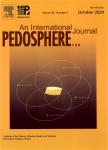Nutrient Uptake and Use Efficiency of Irrigated Rice in Response to Potassium Application
Nutrient Uptake and Use Efficiency of Irrigated Rice in Response to Potassium Application作者机构:DepartmentofResourceScienceCollegeofEnvironmentalandResourceScienceZhejiangUniversityHangzhou310029(China)
出 版 物:《Pedosphere》 (土壤圈(英文版))
年 卷 期:2004年第14卷第1期
页 面:125-130页
核心收录:
学科分类:09[农学] 0903[农学-农业资源与环境] 0901[农学-作物学] 090301[农学-土壤学]
基 金:Project supported by the International Fertilizer Industry Association (IFI), France the Potash & Phos-phate Institute (PPI), USA and Canada the International Potassium Institute (IPI), Switzerland
主 题:nutrient uptake nutrient use efficiency paddy soil potassium irrigatedrice
摘 要:Potassium is one of the most important nutrients for rice production in many areas of Asia, especially in southeast China where potassium deficiency in soil is a widespread problem. Field experiments were conducted for four consecutive years in Jinhua City, Zhejiang Province, to determine utilization of nutrients (N, P and K) by inbred and hybrid rice and rice grain yields as affected by application of potassium fertilizer under irrigated conditions. Grain yield and nutrient harvest index showed a significant response to the NPK treatment as compared to the NP treatment. This suggested that potassium improved transfer of nitrogen and phosphorus from stems and leaves to panicles in rice plants. N and P use efficiencies of rice were not strongly responsive to potassium, but K use efficiency decreased significantly despite the fact that the amount of total K uptake increased. A significant difference between varieties was also observed with respect to nutrient uptake and use efficiency. Hybrid rice exhibited physiological advantage in N and P uptake and use efficiency over inbred rice. Analysis of annual dynamic change of exchangeable K and non-exchangeable K in the test soil indicated that non-exchangeable K was an important K source for rice. Potassium application caused an annual decrease in the concentration of available K in the soil tested, whereas an increase was observed in non-exchangeable K. It could be concluded that K fertilizer application at the rate of 100 kg ha-1 per season was not high enough to match K output, and efficient K management for rice must be based on the K input/output balance.



